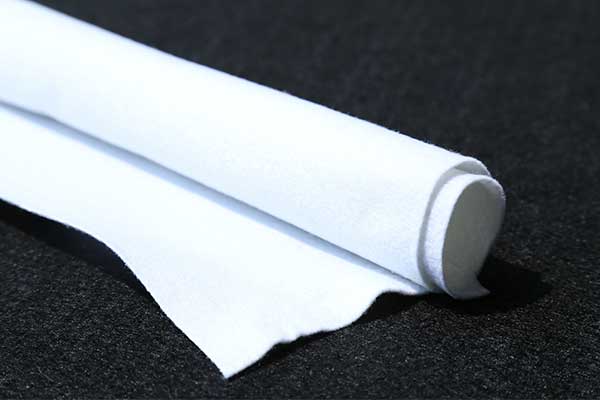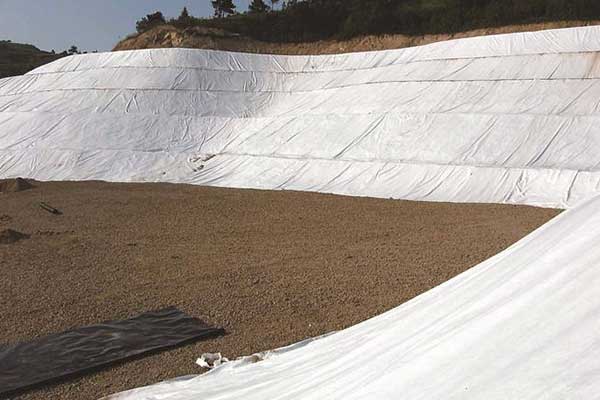Woven vs. Nonwoven Geotextile Fabric: What’s The Difference?
When it comes to civil engineering and construction projects, choosing the right geotextile can be crucial for ensuring long-term durability and stability. Among the various options available, two popular choices are woven geotextiles and nonwoven geotextiles. Both types offer unique characteristics and benefits, making them suitable for different applications.

What is Woven Geotextile?
Woven geotextiles are manufactured by weaving synthetic fibers together in a regular pattern. These fibers are typically made of polypropylene or polyester, offering high tensile strength and durability. Woven geotextiles feature distinct pore sizes and permeability levels, allowing for effective filtration and drainage while providing soil stabilization and reinforcement.
Key Characteristics of Woven Geotextile:
- High tensile strength: Woven geotextiles are known for their excellent tensile strength, making them suitable for applications that require reinforcement and stabilization of soil.
- Permeability: The woven structure allows water to pass through easily, preventing waterlogging and ensuring efficient drainage.
- Resistance to UV degradation: Many woven geotextiles are treated to withstand exposure to ultraviolet (UV) radiation, prolonging their lifespan in outdoor environments.
- Filtration: The uniform pore structure of woven geotextiles enables effective filtration of soil particles while allowing water to flow through.
- Puncture Resistance: Due to their tightly woven construction, these geotextiles offer excellent puncture resistance, ensuring long-term performance in demanding conditions.
Applications of Woven Geotextile:
- Road construction and pavement reinforcement
- Erosion control on slopes and embankments
- Soil stabilization in retaining walls and landfill liners
- Filtration and separation in drainage systems and geotechnical applications

What is Nonwoven Geotextile?
Nonwoven geotextiles are engineered by bonding synthetic fibers together through mechanical, thermal, or chemical processes. Unlike woven geotextiles, nonwoven varieties have random fiber orientation, resulting in isotropic properties. Nonwoven geotextiles are typically made from polypropylene or polyester fibers, offering excellent filtration and separation capabilities.
Key Characteristics of Nonwoven Geotextile:
- High water permeability: Nonwoven geotextiles exhibit superior water permeability, allowing for efficient drainage and filtration of water.
- Fabric flexibility: The random fiber orientation provides nonwoven geotextiles with flexibility, enabling them to conform to irregular surfaces and terrain.
- Filtration efficiency: Nonwoven geotextiles effectively filter soil particles while maintaining excellent hydraulic conductivity.
- Lightweight and easy to install: Nonwoven geotextiles are lightweight, making them easy to handle and install on construction sites.
Applications of Nonwoven Geotextile:
- Separation and filtration in road construction and railway projects
- Drainage and erosion control in landfills and coastal protection structures
- Protection of geomembranes in lining systems
- Filtration in drainage systems and retaining walls

Choosing the Right Geotextile
Selecting the appropriate geotextile for your project depends on several factors, including the site conditions, project requirements, and budget constraints. Consider the following factors when choosing between woven and nonwoven geotextiles:
- Strength Requirements: If your project requires high tensile strength and puncture resistance, woven geotextiles may be the preferred choice.
- Filtration and Drainage: For applications that prioritize filtration and drainage, such as drainage systems or erosion control, nonwoven geotextiles offer excellent permeability and filtration properties.
- UV Exposure: In projects where prolonged exposure to sunlight is expected, such as road construction or slope stabilization, woven geotextiles with UV stabilization properties are recommended.
- Cost Considerations: Nonwoven geotextiles are often more cost-effective than woven geotextiles, making them a preferred option for projects with budget constraints.
In conclusion, woven and nonwoven geotextiles each have unique characteristics and advantages, catering to different project needs. By understanding the differences between these two types of geotextiles, you can make an informed decision to ensure the success and longevity of your construction or civil engineering project. Whether it’s enhancing soil stability, controlling erosion, or improving drainage systems, choosing the right geotextile is essential for achieving optimal results.
RoadSky and Geotextile
RoadSky is a high-quality geotextile filter fabric manufacturer and supplier. Product materials and sizes can be customized according to customer requirements to meet different project needs. If you are looking for geotextile filter fabric for your project, you can contact us directly for more information.

